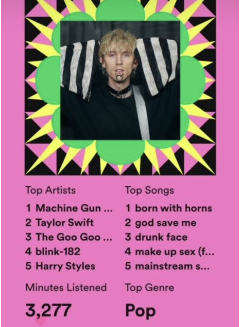Consumer Attitudes and Behaviors in the Music Industry
As marketers, we need to look at music fans with different eyes, as they are our most valuable asset. It’s time to start looking deeper and go beyond the surface, analyzing and interpreting their individual preferences, attitudes, and behaviors. This knowledge is vital and will help us better understand our target market, enhance our strategies, increase engagement, and ultimately achieve a deeper connection with our audience.
In my blog post last week, I discussed the connection between consumers' post-purchase experiences and attitudes. This behavior is linked to consumer attitudes within the Tri-component Attitude Model, which examines the cognitive, affective, and conative responses that follow a transaction.
The MBA Knowledge Base states, “Attitudes are complicated to change. A person’s attitudes fit into a pattern, and changing one attitude may require making many difficult adjustments. It is easier for a company to create products compatible with existing attitudes than to change the attitudes toward their products.”
Our consumer’s cognitive beliefs about a music product or artist may be challenged based on their post-purchase experience, altering their attitude toward the brand or artist.
David is an avid Peal Jam fan and has signed up for the Ten Club, hoping to get selected in the lottery to get tickets to their show. He holds a solid cognitive belief about the band’s talent and expects them to perform an electrifying concert like the others he’s attended. This is not a show he can afford to miss. It’s Dave’s lucky day, as he’s fortunate enough to get selected to purchase tickets.
He flies to Chicago and enters Wrigley Field. He cannot believe he’s finally made it here. During the concert, he becomes emotionally immersed in the music, connecting with the band and the fans surrounding him. His affective response intensifies his bond with the artist and enhances his attitude towards their music and brand. He is having the time of his life and is delighted that this moment is finally happening.
After the show, he engages in various conative behaviors influenced by his post-purchase experience. He goes to the merchandise table and buys a couple of T-shirts so he can remember this night, walks out of the stadium singing “Black” with his friends, posts clips of the show on social media, and ends his night with his friends at the local bar, where they talk about the show for hours.
This is just an example of how these post-purchase emotions significantly shape consumers' overall attitudes toward a music band or artist, influencing how a customer will experience future behaviors and stay loyal to the brand.
Let's look into more examples of the Tri-Attitude Model in the music industry:
Taylor Swift
Folklore Era Merchandise
Cognitive Component
The cognitive component is the knowledge that a consumer has about a particular product or artist. Everyone knows that I am a huge Taylor Swift fan. Therefore, I believe that she’ll consistently deliver high-quality music with beautiful lyrics that will contribute to my positive cognitive attitude toward that artist's work.
When her album Folklore was released, it was marketed as one of the albums showcasing the singer’s storytelling art. At that time, I developed a cognitive reverence for her artistic evolution and came to admire her as a singer and a talented songwriter.
Affective Component
The affective component is how consumers feel about a particular product or artist. When Adele released her album "30," she resonated with listeners’ personal experiences of heartache and healing. Having her fans connect with her on such an emotional level contributed to her album surpassing 1.5 million US sales in 2022.
Adele's marketing strategy was built around her fans' affective component, and her team used effective emotional strategies in her campaign, which contributed to the singer’s worldwide success.
Spotify Wrapped
Erika Gimenes Playlist
Conative Component
The conative component is a consumer's behavioral intention or predisposition toward a particular product or artist. Will they purchase an album, attend a show, or stream music?
A good example is Spotify's annual "Wrapped" campaign. The music streaming service invites subscribers to share their personalized listening habits on social media yearly. Spotify taps into the conative component by encouraging user interaction and reinforcing their positive attitudes towards the Spotify brand through a shared experience with other music fans.
“Originally, we believed these experiences needed to be short and sweet. But we’ve found a cohort of fans wanting to go deeper. They want to engage.” Spotify’s head of global marketing, Louisa Ferguson, shared with Mobile Marketing Magazine. This was exciting because it inspired us to do more data-rich, complicated experiences.
This interactive campaign increases user engagement and makes Spotify a trusted provider of musician experiences for individual platform users and the community they build among music fans.
Takeaways
By understanding the three fundamental elements of attitudes within the TriComponent Attitude Model, marketers can build a brand experience that will resonate with their customers. We can reinforce positive attitudes and cultivate a loyal fanbase if we understand and enhance the post-purchase experience through engaging content and gear our efforts into community-building and personalized interactions with our audience.



